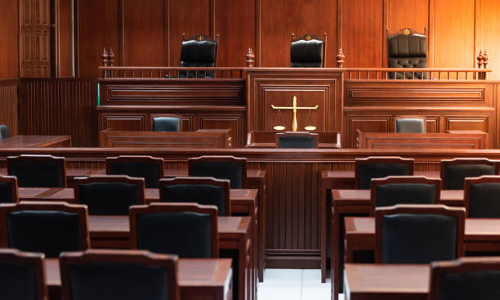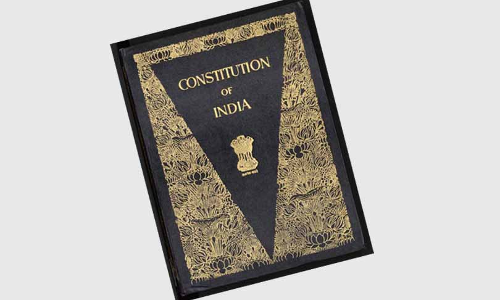CAG Findings On Rafale Quality Requirements & SC Verdict
The revelation in the CAG report that the configuration of the aircraft was the same as tested and approved by the IAF in 2007, raises doubt as to whether DPP 2013 was followed in respect of technical evaluation of 2016 deal.;

The report of the Comptroller and Auditor General of India(CAG) tabled in Parliament on Wednesday has adverse findings regarding the quality parameters of the technical offer made by Dassault Aviation in the Rafale deal as per the 2007 Request For Proposal(RFP).The reports notes that in May 2008, the Technical Evaluation Committee(TEC) had rejected Rafale for non-compliance of nine Air...
The report of the Comptroller and Auditor General of India(CAG) tabled in Parliament on Wednesday has adverse findings regarding the quality parameters of the technical offer made by Dassault Aviation in the Rafale deal as per the 2007 Request For Proposal(RFP).
The reports notes that in May 2008, the Technical Evaluation Committee(TEC) had rejected Rafale for non-compliance of nine Air Staff Quality Requirements(ASQR) prescribed in the RFP. In review aslo, the TEC upheld its decision to reject the bid of Dassault for Rafale in March 2009. The Ministry of Defence(MoD) approved the decision to reject the technical bid of Rafale.
After that, Dassault made a suo moto representation in April 2009, agreeing to modify certain parameters. While evaluating the modified offer, the MoD noted additional deficiencies in Quality Requirements, making the total deficiencies 14, instead of earlier 9. The TEC expressed that "the feasibility and modalities of implementing the modification proposed by the vendor may be verified during field evaluation trials".
According to the CAG, this was an irregular process, and Dassault should not have been permitted to modify its technical offer. As per para 35 of the Defence Procurement Procedure(DPP) of 2006, technical offer once submitted should not be materially changed subsequently. The CAG rejected Ministry's reply that the modification was "minor deviations". The Audit noted that the opportunity provided to M/s Dassault Aviation to significantly modify its technical and price bid was in violation of DPP, and that it was given preferential treatment(page 116, CAG Report).
Modifications not evaluated properly
Significantly, even the modified offer of Rafale was not properly evaluated and tested, the CAG found. The report noted deficiencies at all stages of technical evaluation, viz at the stages of Technical Evaluation Committee(TEC), Field Evaluation Trial(FET) and Staff Evaluation Report(SER).
Another aircraft, Eurofighter, was also permitted to modify the technical offer. In case of both these aircraft- Rafale and Eurofighter- CAG returns a damning finding that they were technically accepted without evaluating modifications/enhancements. They were cleared on the basis of their presentation in the lab as to how they proposed to meet the shortcomings in ASQRS.
Two aircraft viz., Eurofighter and Rafale were cleared based on their presentation in the lab as to how they proposed to meet the shortcomings in meeting certain ASQRs. Therefore the aircraft were technically accepted without evaluating the significant modification/ enhancements made on them.(Page 117, CAG Report)
In 2012, the then Defence Minister had referred the Rafale deal to a team of Ministry officials for review. The report submitted by the team in March 2015, apart from citing other irregularities, found that the proposal of Dassault was liable to be rejected at the threshold for not meeting quality requirements. The report of the team said :
At the stage of TEC, the proposal of M/s DA was non-compliant to the RFP with respect to the ASQR, Warranty clause and option clause. The proposal of the vendor should have been rejected at the TEC stage itself.(Page 125, CAG Report)
How the findings on technical parameters of 2007 RFP are applicable to 2016 deal?
Now, coming to this pertinent question.
The new deal for purchasing 36 Rafale aircraft in flyaway condition based on the Inter Governmental Agreement(IGA) concluded between France and India in September 2016, was compared by the CAG with the previous deal of 126 aircraft( 18 flyaway + 108 assembled in India on transfer of technology basis) based on 2007 RFP with Dassault Aviation.
However, the comparison was only on three aspects : 'price', 'delivery' and 'maintenance'.
The report does not analyse the technical parameters of the 2016 deal. Though the Auditor scrutinizes the technical evaluation of 2007 RFP, similar exercise is not carried out with regard to 2016 deal.
On the other hand, there are sufficient indications in the report that the technical parameters of the new offer are the same as the previous one.
The deal was finalised by the Indian Negotiating Team(INT) by ensuring that configuration of the 36 aircraft to be delivered as per the new deal is the same as the configuration tested and approved by Indian Air Force in 2007. The Report notes in Page 129 as :
The INT had also to ensure that the 36 aircraft along with weapons and associated systems would be delivered in the same configuration as tested and approved by the IAF(Indian Air Force) in 2007.(Page 129, CAG Report)
At another part also, the report makes similar observation. The INT had proposed to reduce the India Specific Enhancements(ISE) offered by Dassault, in view of the "huge cost and reduced number of aircraft to be purchased". On this, the CAG reports that :
However, this proposal was not accepted by MoD because that was tantamount to dilution of ASQRs which was not in consonance with the basic framework provided by the Joint statement of 10 April 2015 by the DAC that aircraft must have the same configuration. (Page 131, CAG Report)
In fact, the joint statement by India and France issued on April 10, 2015 regarding supply of 36 Rafale aircraft said that "the aircraft and associated systems and weapons would be delivered on the same configuration as had been tested and approved by the IAF, with a longer maintenance responsibility by France". This statement is extracted in the note submitted by the Government in Supreme Court.
It is problematic to say that the new aircraft will have the same configuration as tested and approved by the IAF in 2007. Because, the CAG had found the acceptance of technical offer of Rafale as per 2007 RFP to be irregular, as discussed in the earlier part of this article. The offer was found to be not complying 14 ASQR parameters. Even the modifications/enhancements were not evaluated, the CAG had noted. The Auditor also found that there was no proper Field Evaluation Trials(FET). As per CAG findings, the technical evaluation of Rafale had failed at the stages of TEC, FET and SER.
It may also be noted that the team of Ministry officials appointed to evaluate the 2007 offer had opined that the technical offer of Rafale was so deficient that it was liable to be rejected at the threshold.
So, when it is said that the same configuration was adopted for the 2016 deal, does it mean that the technical deficiencies noted earlier was carried into the new deal? When the CAG slams the testing and evaluating process followed by IAF, how can the results of such a process be applied in respect of the new deal?
The CAG report does not shed light on these questions.
CAG Findings & SC Verdict.
In response to the PILs challenging the deal, the Centre submitted that the deal was finalised following the DPP 2013.
"The DPP 2013(Defence Procurement Procedure) was followed in 36 Rafale aircraft procurement", stated the note submitted by the Government. This should mean that the evaluation by TEC, Field Evaluation Trials and Staff Eevaluation as per DPP 2013 was followed in respect of the new deal.
But how does this statement reconcile with the CAG finding that the deal was finalised as per the configuration tested and approved by IAF in 2007?
There is no mention in the CAG report on any fresh testing and evaluation process carried out for the deal of 36 aircraft.
While dismissing the PILs on December 14, the SC noted that the deal was finalised after following due process, though with minor deviations from procedure.
"We have been informed that joint exercises have taken place, and that there is a financial advantage to our nation", observed the judgment authored by CJI Gogoi to reject the arguments of petitioners against the IGA.
But, as stated above, the CAG had found that no field evaluation test was held in respect of the modifications/enhancements made in Rafale offer. The CAG finding was that the offer was accepted on the basis of presentations by Rafale in the lab as to how the shortcomings in technical parameters will be addressed.
If that be so, what are the "joint exercises", which the SC referred to?
True, the SC had stated it did not examine the "technical suitability of the equipment", as the only issue was whether the decision-making process was proper and legal. The question whether the technical parameters of the aircraft were tested and evaluated under DPP 2013 as claimed by the Union is certainly a relevant question in the issue of 'decision-making process'. On this aspect, the Court chose to broadly accept the claim of the Centre. The centre's submission that the deal was finalised after "joint exercises" was accepted at face value.
However, the revelation in the CAG report that the configuration of the aircraft was the same as tested and approved by the IAF in 2007, raises doubt as to whether DPP 2013 was followed in respect of technical evaluation of 2016 deal. This question gets weightier in the light of the scathing findings by the Auditor that the technical evaluation of the 2007 offer in respect of the aircraft was not properly done.
In the wake of CAG report, these fresh questions arise.
Read CAG Report





